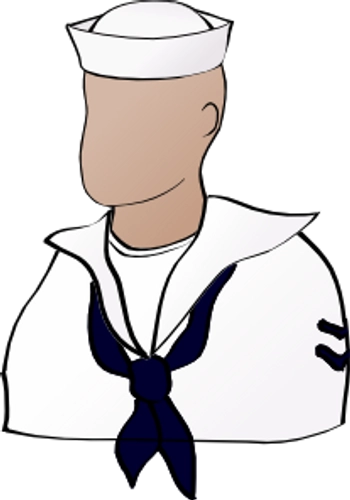This is a POWER story about: HOW ONLY 13 Men broke the Navy’s Toughest Color Barrier
If you have the Book/Journal, PIP$ PROFIT$ & POWER, this story is related to the Intro p. xii
The BEST Challenge from this story is found in the book #4 on P. 16
POWER WORD: HABIT
13 Men Broke the Navy’s Color Barrier
This is a POWER Story about How 13 Black Men Broke the Navy’s Toughest Color Barrier
During World War II, a group of African American sailors was chosen to integrate the Naval Officer Corps, forever changing what was possible in the U.S. Navy.
Sam Barnes racked his brain one chilly morning in January 1944, wondering what he might have done wrong. Barnes, a popular African American petty officer working at Great Lakes Naval Training Station in Illinois, had been in the Navy for 15 months and had never been disciplined. Why, he wondered, was he being ordered to the white side of the segregated station, a command usually reserved for sailors who were in trouble?
The 28-year old Ohio native walked the mile from Camp Robert Smalls, the black-only camp at the northwest corner of the station, to the main offices and found several other black men waiting. He recognized a few faces, but most were new to him and none could say why they had been summoned.
Commander Daniel W. Armstrong, a tall, handsome, aristocratic-looking man with an upright gait and an immaculate uniform, looked the 16 black men over. He was the white officer in charge of the black camp, a man whose willingness to work with African American enlistees earned praise from the higher-ups in Washington.
“Do you know why you are here?” he asked.
Silence.
Commissioned Officers
“Well, the Navy has decided to commission Negroes as officers in the United States Navy, and you have been selected to attend an officer indoctrination school,” Armstrong went on, as Barnes later recalled, in an oral history edited by Paul Stillwell, a retired Navy officer, historian and author.
The statement was matter-of-fact, unemotional. Armstrong did not congratulate; he did not encourage; he made no comment about historical significance. And yet his simple sentence marked one of the most radical decisions the Navy had ever made. Officer positions in the U.S. Navy had previously been off limits to black men, and these 16 enlistees had been summoned from training schools and shore installations across the United States to break that color barrier. They were going to attempt to integrate the officer corps.
For the 16 men, the stakes could not have been higher. There were nearly 100,000 black men in the Navy. If any of them were ever to wear an officer’s uniform, if any were ever to command a ship or graduate from the Naval Academy, if any were ever to lead white men in battle, then these 16 would have to succeed.
These men, who before the war had been metalsmiths, teachers, lawyers and college students—the children and grandchildren of slaves who had seen a family member lynched and been denied jobs because of their skin color—would have to prove that black men had the temperament for command and the leadership qualities necessary to wear the gold stripes.
The story of the Navy’s first black officers—told in full for the first time in Dan Goldberg’s book The Golden Thirteen: How Black Men Won the Right to Wear Navy Gold, remains little known, overshadowed by the heroics of the Tuskegee Airmen and Patton’s Panthers. But their success, both as candidates and as officers, forever changed what was possible for African American sailors and anticipated the coming civil rights movement.
Racism in the RANKS
Americans may have fought against racism abroad during World War II, but one of the most consequential battles in the war for equality took place 35 miles north of Chicago, in a Spartan barracks that held 16 cots, 16 chairs and one long table.
The decision to train black Naval officers was the culmination of a four-year campaign that began alongside the country’s preparations for war. When President Franklin Roosevelt in 1940 called upon the U.S. to become an “arsenal of democracy” and defend democratic ideals, he was referring to guns, ships and planes. Civil rights leaders and activists heard a call for something less tangible but no less critical: equality.
From 1940 to 1944, thousands of Americans marched and protested, wrote letters and signed petitions, beseeching their congressmen and begging the president to let black men serve equally in the U.S. Navy. How could the United States preach and defend equality around the globe, they asked, and yet discriminate so outrageously in its own Navy? Even America’s war enemies, the Japanese, claimed that the so-called freedoms America espoused were for white men only.
Racism existed throughout the armed services at the time, but the Navy, whose leaders feared mixing races in the close quarters aboard ship could disrupt cohesion and damage morale, was especially hostile to people of color. The first black Army officer graduated West Point in 1877, and by World War II, the Army already had a black general.
The Navy, on the other hand, had suspended enlistment of blacks altogether from 1919 to 1933, and at the start of World War II, still denied black men entry into the general service, refusing to train them as electricians or machinists and insisting they work as messmen, where they were limited to serving meals and shining shoes. When civil rights leaders demanded fairer treatment they were confronted with an intransigent bureaucracy that was far more concerned with efficiency than with equality, by a Navy secretary who was certain that integration would bring disaster and by admirals who were adamant that worthy black men could not be found in the whole of the United States.
On the side of DEMOCRACY
It was an idea that the NAACP, civil rights leaders and black columnists said was necessary if the United States were truly to stand on the side of democracy. And it was an idea the Navy’s top brass considered a definite step backward. Major General Thomas Holcomb, commandant of the Marine Corps, called the enlistment of black men “absolutely tragic,” and told the General Board that African Americans had every opportunity “to satisfy their aspiration to serve in the Army.” Their desire to enter the naval service, he said, was largely an effort “to break into a club that doesn’t want them.”
Just six days after the General Board released its report saying it could not comply with a request to enlist 5,000 black men into the Navy’s general service, President Roosevelt, criticized in recent years by historians who believe he could have been more aggressive on civil rights, overruled his admirals and his Navy secretary. The president wrote that complete desegregation “would seriously impair the general average efficiency of the Navy” but also insisted that there were some additional tasks black men could perform in the general service without hurting cohesion aboard ships.
Over the next 18 months, thousands of black men would train as quartermasters, machinists and electricians, learning skills that would boost black employment and prosperity after the war.
But even as some barriers fell, one remained: At the end of 1943, there were still no black officers. There was also growing political pressure on the president and the Navy secretary to rectify what seemed to many a glaring blemish. Adlai Stevenson, the future two-time Democratic nominee for president, convinced Secretary of the Navy, Frank Knox that the situation was untenable. Stevenson, at the time Knox’s speechwriter and confidant, told his boss, an efficiency expert, that keeping black men out of the officer corps was now unquestionably inefficient.
There were 60,000 black men in the Navy, and 12,000 more were entering every month, Stevenson wrote to Knox on September 29, 1943. “Obviously, this cannot go on indefinitely without accepting some officers or trying to explain why we don’t,” Stevenson said. “I feel very emphatically that we should commission a few negroes.”
Knox assented. Three months later, Barnes and his comrades were in Armstrong’s office, learning they were going to make history. Many of Barnes’ fellow officer trainees were cynical, not yet willing to believe the Navy would really allow black officers, even after they completed their training. But each man swore he’d give it his all anyway. “We believed there were people who hoped we’d fail,” Barnes later recalled. “We were determined to succeed in spite of the burden that was being placed on our shoulders.”
The Chances
Giving black men a chance did not mean they’d be given equal treatment. Great Lakes Naval Training Station was home to an elite service school with plenty of equipment that could aid their training. But, the 16 candidates saw almost none of that. They trained separately from all other sailors, drilled apart, and ate alone, living in their own barracks in the segregated section of the station, essentially under house arrest. The officer corps was ready to be integrated. Great Lakes Naval Training Station was not.
Many in this first group recalled in interviews and oral histories that their white instructors weren’t all that interested in whether the men passed, failed or learned anything at all. Some instructors, it seemed to the officer candidates, acted as if this whole exercise was a waste of time.
Lt Richmond’s attitude, to be especially hard on the men, said he did that to motivate. And that it did. It them made the group even more determined. They were going to show him and every other Richmond-like figure they’d ever met.
And so they did.
The men were supposed to be in bed with the lights out at 10:30 p.m., but well past that hour, they sat together in the bathroom, flashlights in hand, studying the lessons of the past day and preparing for the day ahead. They draped sheets over the windows so no one outside would notice the light. They were intent on proving that their “selection was justified,” Barnes said, “and that we weren’t a party to tokenism.”
Jesse Arbor, a quartermaster, taught semaphore and Morse code. He’d give a prompt, Barnes remembered, such as “a ship approaching on such-and-such side.” The men would tap it out on the wall of the restroom. If they got it wrong, they’d start again. Even their toughest instructors weren’t as demanding as they were of themselves. When the men went to class the next day there was little a teacher could do to catch them off guard.
Despite the 20-hour days, the ridicule and the racism, the 16 candidates never outwardly showed any sign of dissent. They knew that losing their temper could give credence to the pervasive belief that black men lacked the demeanor necessary for command.
The Exams
Once, the officer candidates were lined up for a medical exam. “All right, you boys, strip down,” someone yelled. “Everything off. Strip down.” “Stand over there,” You can only imagine what was going to happen next. Body parts were smacked by a 36 inch ruler. His comrades were certain a riot was about to start. This was it. This was the moment they would surely be kicked out.
“Hey, boy, where did you get this thing from?” the pharmacist’s mate asked, still whacking Arbor’s body. Arbor looked him directly in the eye, just the way the Navy had taught.
“Well, you see, sir, I was raised in a white neighborhood.”
Nothing more than a snicker escaped his peers’ lips, and the white men, furious that they could not get a rise out of the officer candidates, stormed off. Their restraint was not an accident.
Posting Grades
As their training drew to a close in March 1944, the group was posting grades like no other officer class in history. Their marks were so high that some in Washington did not believe they could be real. The men were forced to take some exams again. They scored even higher the second time, eventually earning a collective 3.89 out of 4.0 for the entire course.
Toward the end of their 10-week course, when it became obvious that all of them would not only pass but pass with flying colors, the Navy said it would commission only 12 of the 16 men and a 13th would be made a warrant officer, meaning he’d be above noncommissioned men but still below Ensigns, the lowest officer rank. No official explanation was given for this decision. Whatever the reason, the result was that the first black class, a group that had posted higher marks than any class before it, would have the same pass rate as an average class of white officer candidates.
The 16 men were told that three would be dropped, but not which three. Instead, men were excused to be processed into officer ranks one by one, while the others sat, nervous and dejected, waiting to see who would be cast off. Armstrong never said why three of the men were not commissioned. They simply disappeared from the group and returned to enlisted duty.
When Arbor walked into Armstrong’s office, he remembered the commander looking him over. “Now, in the event that you would be in a position where there was a colored sailor and a white sailor in a fight, whose side would you take,” Armstrong asked, according to Arbor.
“Sir, I have to wait until that occasion arises.”
Armstrong stared at Arbor. He waited.
“The first thing I would think of to do is as an officer, as has been taught to me,” Arbor continued. “It’s the only thing I could rely on. My personal judgment would not enter into the case.”
“Well, that sounds pretty good,” Armstrong said. “Now you know there are no quarters for you.” Arbor didn’t know that. Since there were no segregated officer quarters, he and the men would have to live off base. They were also denied entry into officers’ clubs.
Same stripes… Not the same privileges
It was the first of many times these newly commissioned black officers would learn that they may wear the same stripes as white men, but they would not be given the same privileges. In fact, their commissions came with far more warnings and admonishments than respect and plaudits.
Combat remained out of the question. The Navy would not have black men commanding white men in battle. Instead, the first black officers were given make-work jobs—running drills, giving lectures on venereal disease and patrolling the waters off the California coast in a converted yacht.
They were ignored and disrespected at every turn. Still, they knew that they must keep their heads held high.
They had a responsibility to be the first, not the last. “We were the hopes and aspirations of the blacks in the Navy,” William Sylvester White recalled. “We were the forerunners. What we did or did not do determined whether the program expanded or failed.”
Two months after the first Ensigns graduated, the Navy commissioned 10 more men. This second group of officers proved just as capable as the first 13.
But the Navy never promoted the achievements of those first 13 officers who had broken one of the branch’s most intractable color barriers. For three decades, they were known only as “those
Negro naval officers” or, later, as “those black naval officers,”
This story was written By DAN GOLDBERG, and abridged by me. Dan Goldberg is a health care reporter for POLITICO Pro. He is the author of The Golden Thirteen: How Black Men Won the Right to Wear Navy Gold.
This Power Story is because:
These men had been winnowed from hundreds of potential candidates, chosen because the Navy deemed them not too extreme in their attitudes. Like Jackie Robinson, who would break baseball’s color barrier three years later, these men were chosen because they were expected to suffer these indignities quietly and gracefully.
By the late 1970s, a decade after the civil rights movement had forever changed the status of black people e in the United States, the Navy was newly proud of their accomplishment and ready to show them off. The surviving officers were feted as a symbol of racial integration, of progress, of pride, and a recruiting tool to inspire a new generation. I would like to personally thank these 13 Men. My son is a naval officer soon to be promoted because you paved the way.
I want to leave you with this quotation: “The difference between winning and losing is most often not quitting.” ~ Walt Disney, PIP$ PROFIT$ & POWER by Genie Craff, From the Dedication p. vii
If you don’t have it yet, PIP$ PROFIT$ & POWER FOREX MINDSET MASTERY with the PIP$ PROFIT$ & POWER JOURNAL FOREX MINDSET MASTERY By Genie Craff on Amazon. Thank you!
(c) Copywrite 2023 Genie Craff Enterprises, LLC



